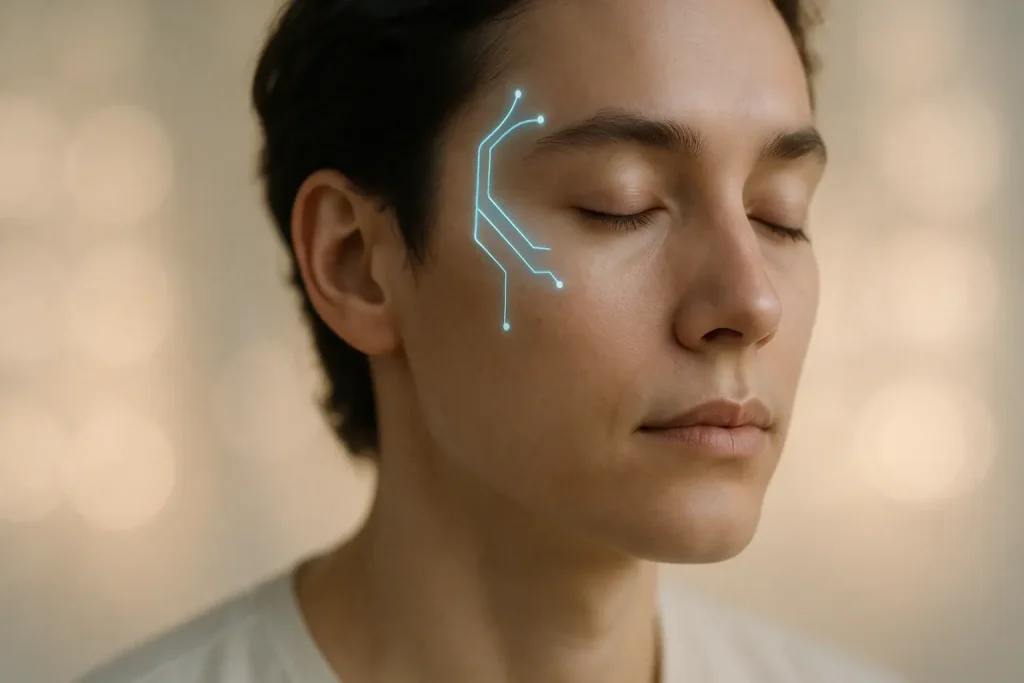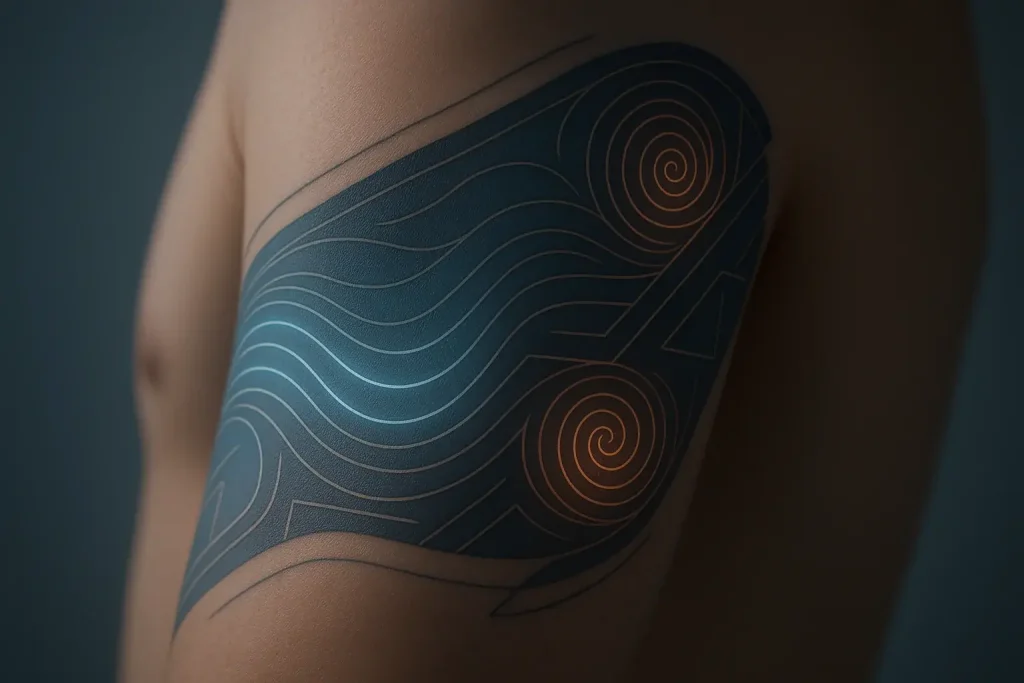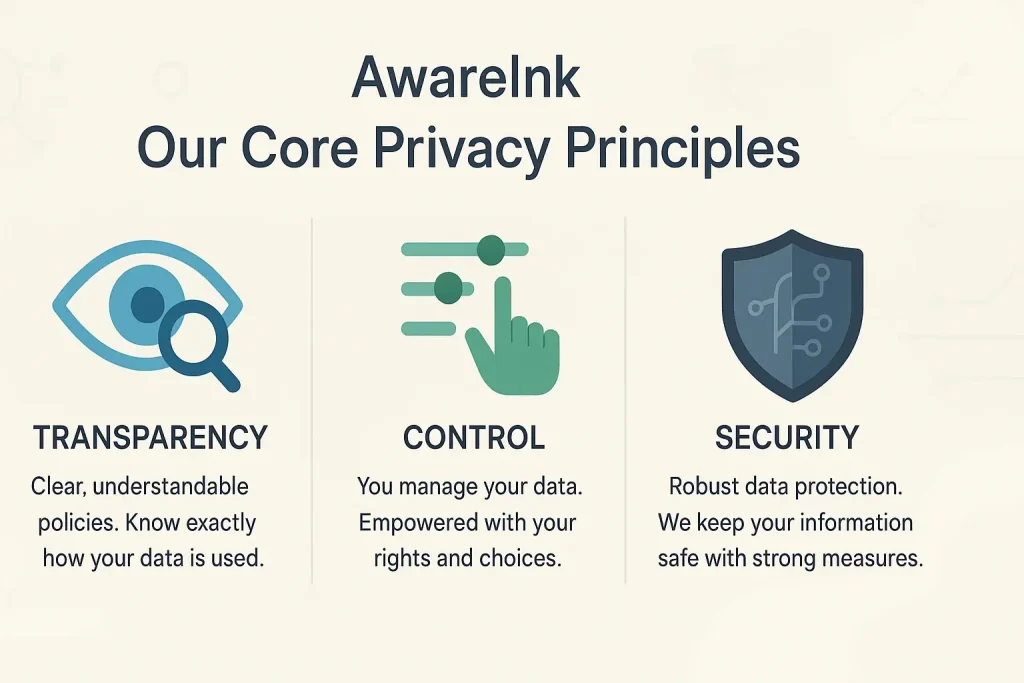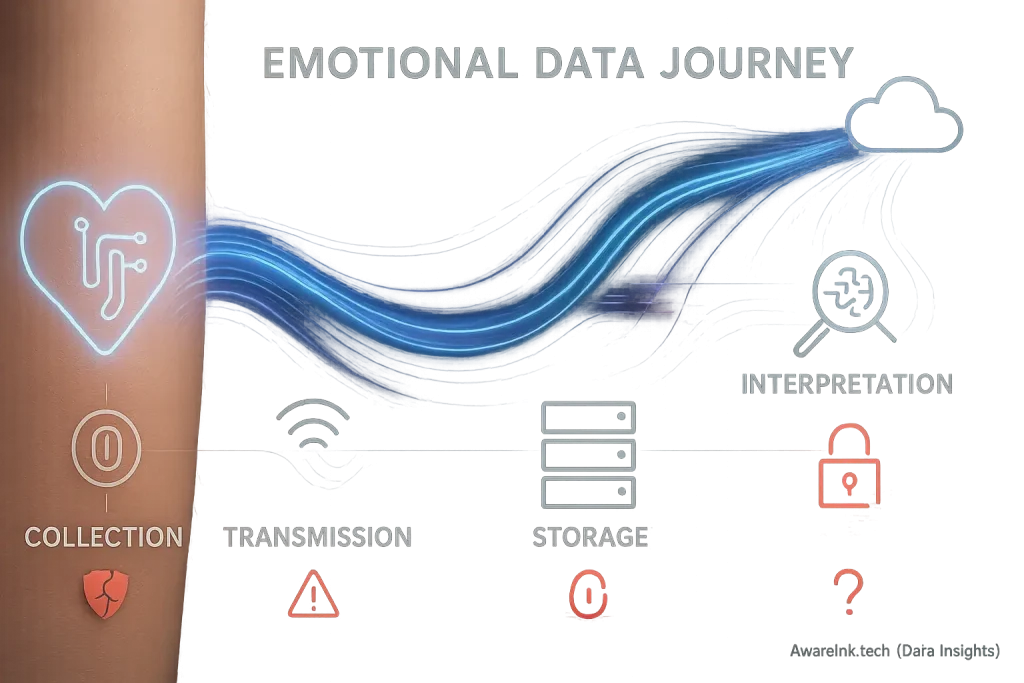The 'Mind' Behind the Ink: Algorithms Interpreting Your Emotional Signals
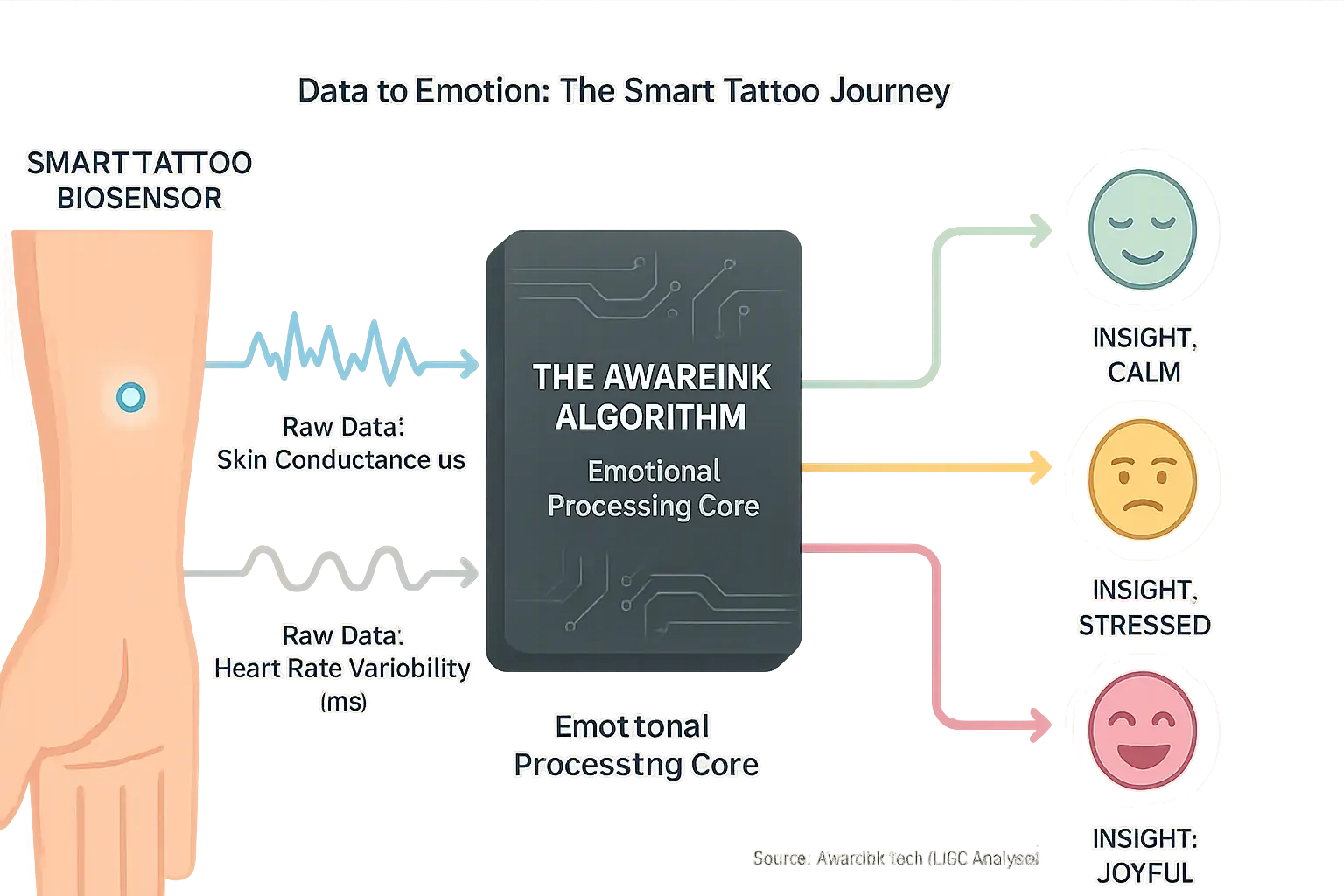
Ever wondered how skin-worn technology could possibly interpret your feelings? Smart tattoos utilize tiny biosensors. These sensors collect raw physiological signals from your body. Emotional interpretation algorithms then become the crucial translators. AwareInk's analysis confirms these algorithms convert streams of data into understandable emotional insights. This conversion forms the core intelligence of mood-adaptive tattoos.
You might see an emotional reading displayed. The precise method of derivation often remains concealed. This creates a "black box" scenario for many users. AwareInk's dedicated research aims to illuminate this complex interpretation process for you. Without these sophisticated algorithms, biosensor data—such as skin conductance changes or heart rate variability—would offer limited understanding. The raw data would simply be numbers. These advanced algorithms perform the vital pattern recognition, translating biological signals into discernable emotional indicators.
The underlying processes can appear intricate. Some users find the technology daunting. AwareInk's objective is to demystify these algorithmic functions. Understanding how your smart tattoo interprets signals, even conceptually, is very important. This knowledge empowers your effective engagement with mood-adaptive technology. It also enables you to critically assess the emotional insights the tattoo reveals, fostering more mindful interaction.
How Algorithms 'Learn' Your Feelings: The Power of Pattern Recognition
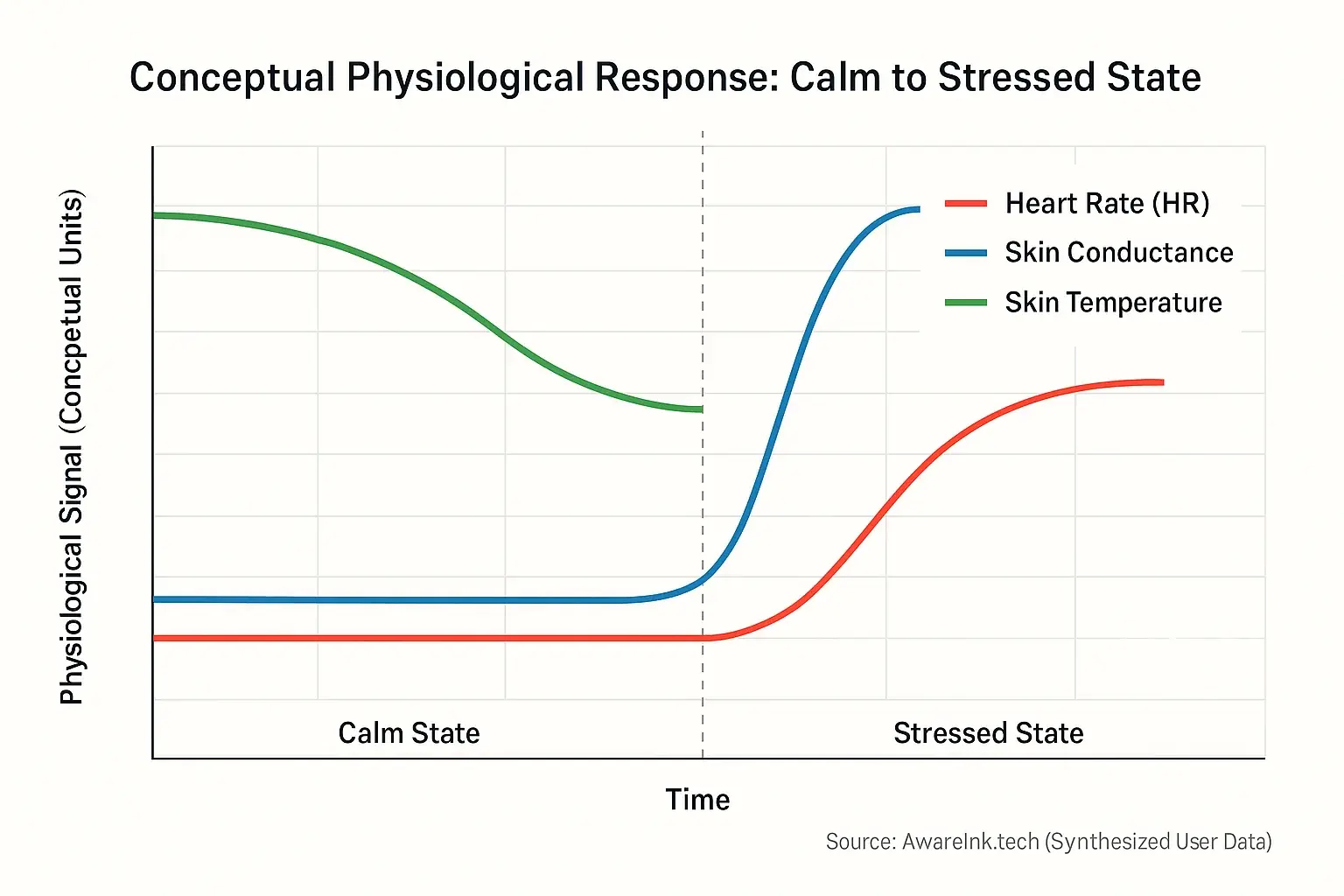
Smart tattoos interpret emotions. This relies on sophisticated pattern recognition. Machine learning (ML) models often power this capability. Think of it like teaching a child. They learn to recognize a happy face from many examples. Not from a dictionary definition. Algorithms learn patterns in a similar fashion.
These algorithms are 'trained'. They use vast datasets of physiological signals. These signals are paired with reported emotional states. The algorithms learn to identify subtle patterns. For example, AwareInk's analysis of potential data patterns suggests a rapid heart rate combined with increased skin conductance might often correlate with anxiety. A slow, steady heart rate could link to calm. The algorithm 'sees' these recurring 'signatures' in your body's signals.
Algorithms don't 'feel' emotions. This is an unspoken truth. They merely recognize statistical patterns from data. AwareInk's deep dive into research papers confirms this. The 'learning' is statistical correlation. Not true understanding. The more diverse and accurate the training data, the better the algorithm becomes. It can then identify complex relationships. This moves beyond simple one-to-one correlations.
Your Unique Vibe: Why Personalized Baselines & Calibration Matter
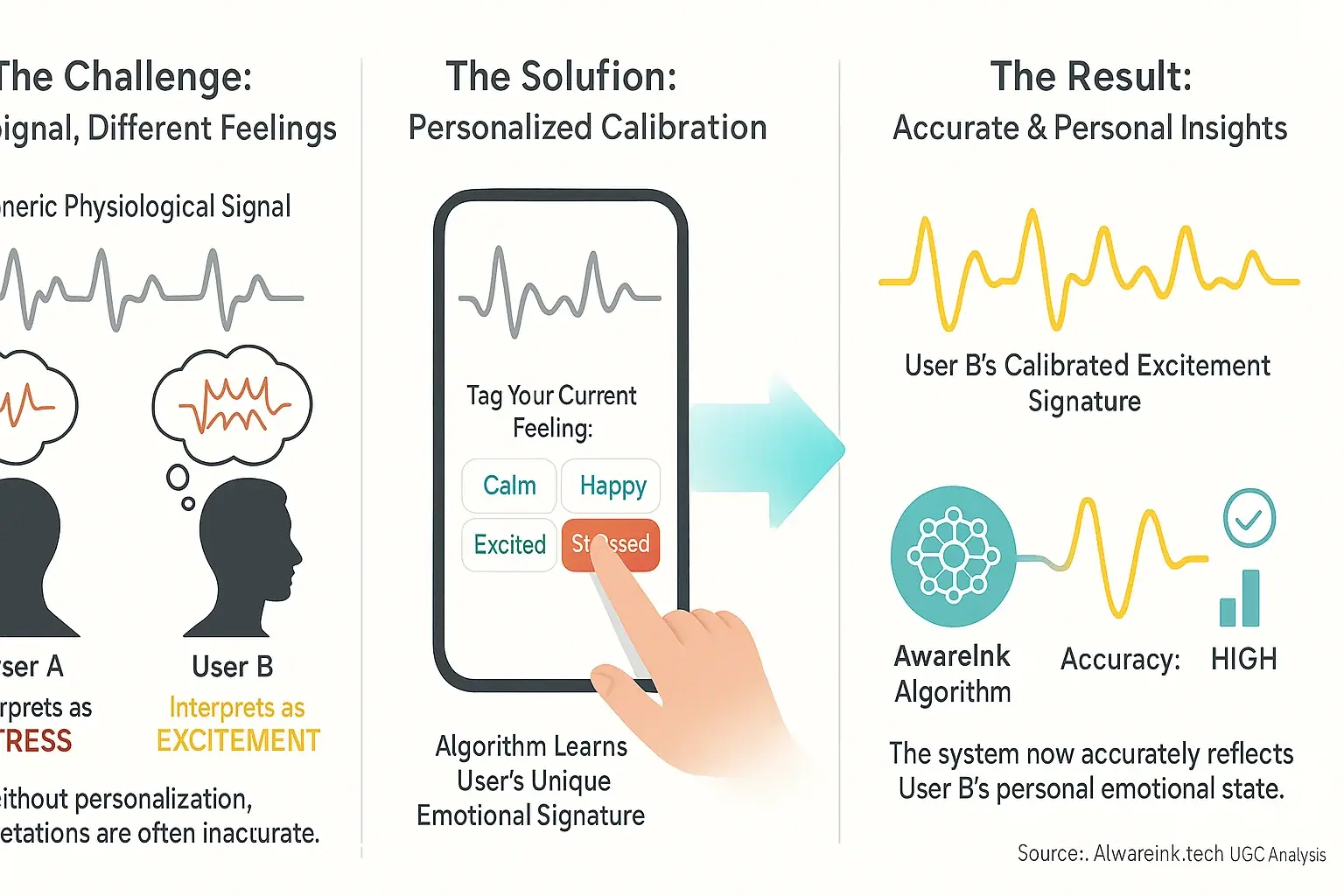
Every individual's physiological responses to emotions are unique. What signifies stress for one person might be pure excitement for another. Your body's language is singularly yours. No two are identical.
Effective mood-adaptive tattoos require a personalized baseline. The algorithm must learn your typical physiological responses during different emotional states. AwareInk's analysis consistently shows this. Without it, accuracy suffers greatly.
Imagine setting up your new smart tattoo. Its companion app will likely ask you to 'tag' current feelings. 'Feeling calm now,' or 'Just experienced a rush of excitement.' This is not mere busywork. You are actively teaching the algorithm what your calm or your specific excitement signature truly is.
Without this crucial personalization, a tattoo's emotional insights can become wildly inaccurate. Frustration often follows. Distrust can then build quickly. Here is an important insight from AwareInk's conceptual user experience analysis: initial setup and consistent feedback are not tedious steps. They form the absolute bedrock, making the tattoo genuinely useful for you.
Beyond the Skin: Why Contextual Data is the Algorithm's Best Friend
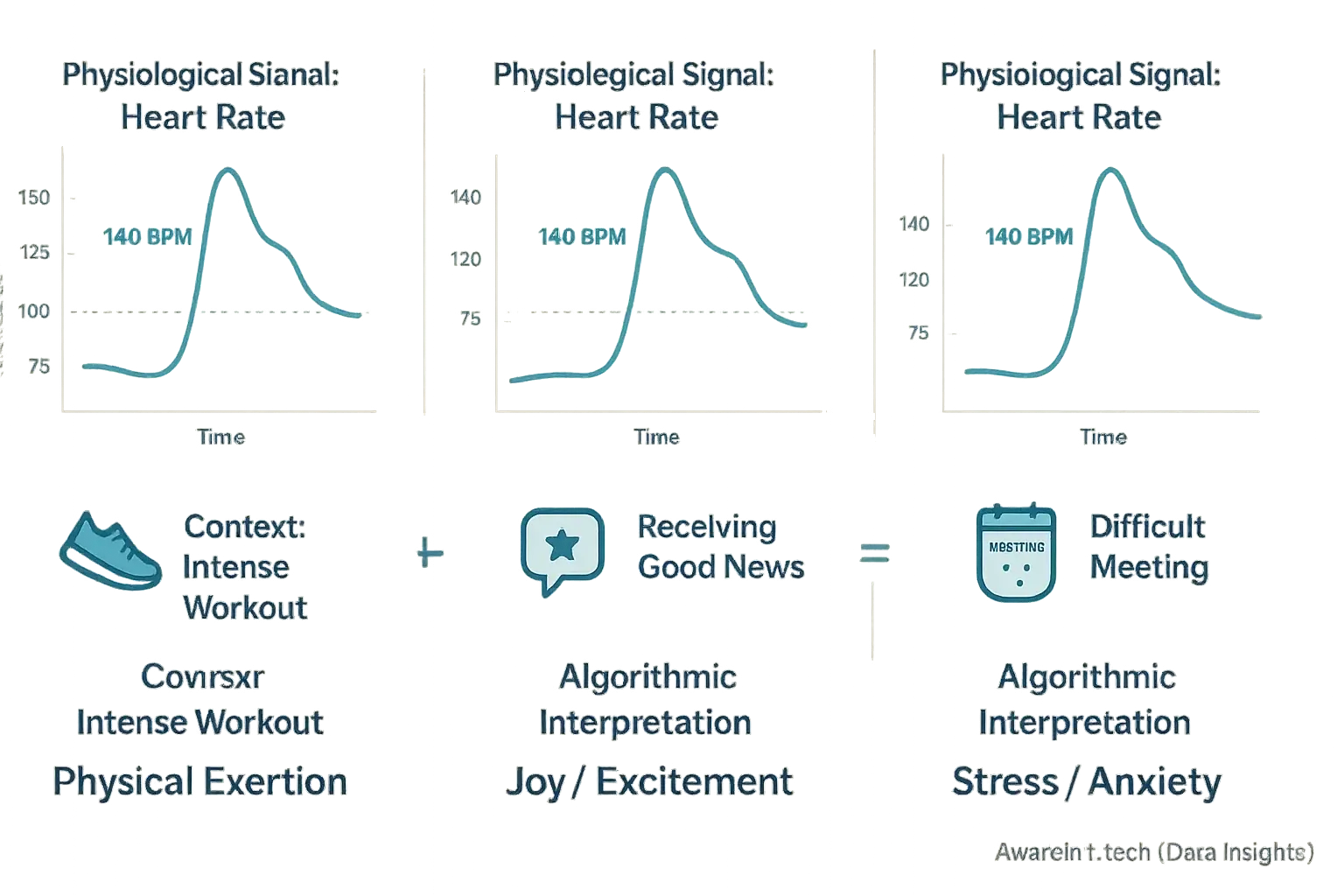
Your heart pounds. Excitement, fear, or just a sprint for the train? Algorithms alone face ambiguity. Raw physiological signals paint an incomplete emotional portrait for any system. Deeper insight needs more.
Contextual data input therefore powerfully enriches these raw physiological readings. Many smart tattoo companion apps enable you to log your activities, location, or feelings. This external information, such as 'just finished intense exercise' or 'attended a difficult meeting', clarifies why your body's signals shift. Calendar events also offer clues. Such data layers improve algorithmic accuracy considerably, reducing misinterpretations.
Physiological data is raw. Its true meaning, without your specific input, often eludes even advanced algorithms. Here lies a crucial point. The more relevant context an algorithm processes, the more precisely it infers your emotional states. This transforms analysis from basic arousal detection to a much fuller, more accurate understanding of your internal world. The tech learns from your life.
Opening the Black Box: Why Your Feedback is the Algorithm's North Star
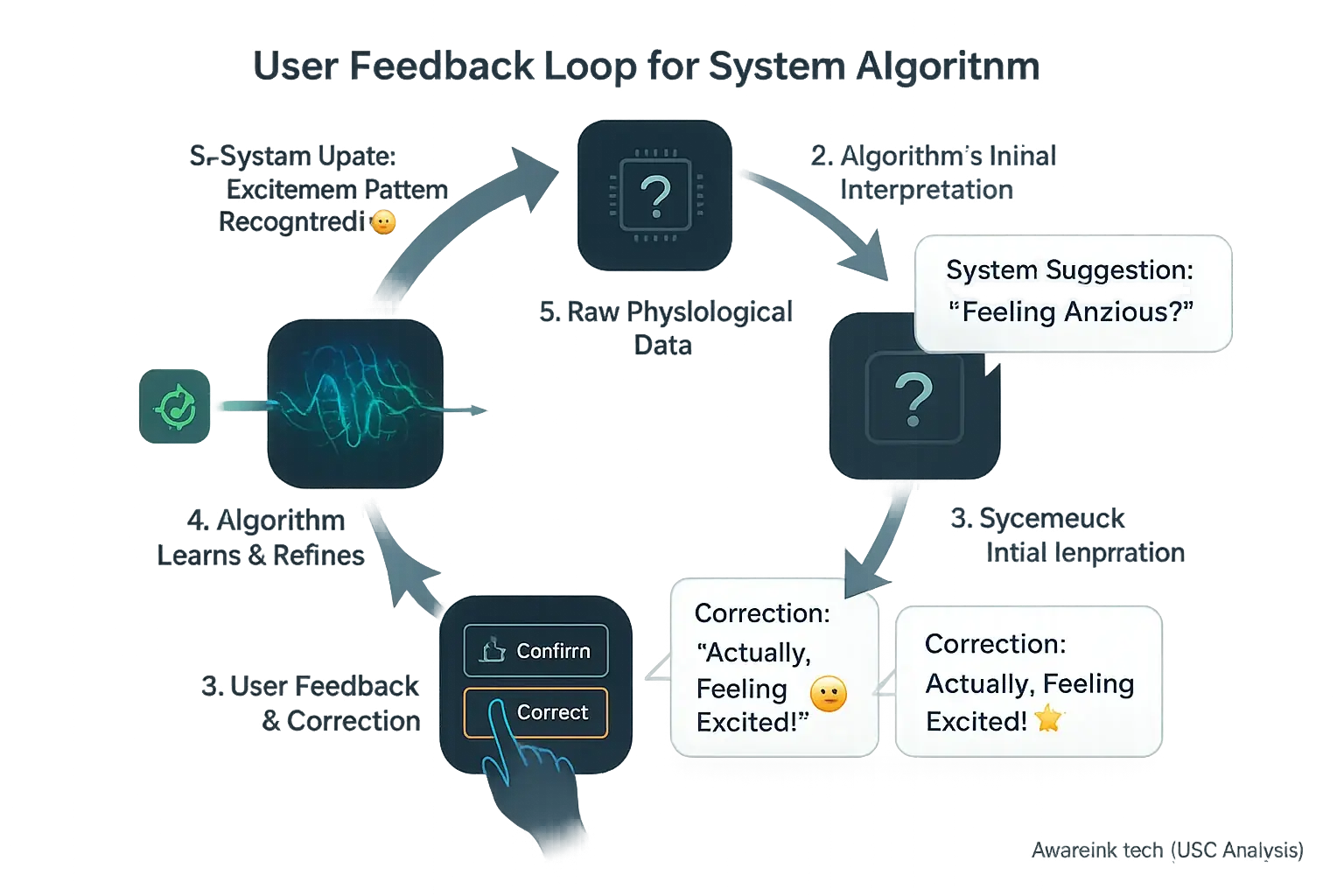
Many users find the algorithm a 'black box'. You see its output. Perhaps "anxious" appears on your screen. The journey there stays hidden. This lack of clarity can reduce trust in the technology. AwareInk.tech knows this feeling well from community discussions. User feedback loops are the key. These loops help refine the algorithm's accuracy continuously.
Robust feedback systems allow your direct input. You can confirm the algorithm's interpretation. Or you correct it. Imagine the app flags "stress." You tell it, "No, that was excitement!" The algorithm learns from your specific correction. It refines its understanding of your unique physiological signals. This process makes the system more accurate for you over time.
Let's be direct about this. AwareInk.tech's synthesis of broad user experiences reveals general patterns. Its true power for your personal journey ignites with your actions. Your active participation diligently teaches your specific algorithm. This continuous feedback delivers more than improved accuracy. It empowers you. You feel in control. You become an active partner with your technology. Your feedback is the key. It unlocks the system's full potential for you.
The Future of Feeling: Algorithms as Guides, Not Oracles
Emotional interpretation algorithms present powerful tools. They guide. They are not infallible oracles of your true feelings. These systems excel at identifying subtle patterns in your physiological data. This process can offer objective insights. You might otherwise overlook these crucial signals.
True emotional understanding always requires your conscious input. Self-reflection is vital. Contextual awareness shapes meaning. Your feedback refines the system. Remember: your tattoo shows physiological signals. You interpret your emotion. The tech is a mirror. Not a mind-reader.
This technology rapidly evolves. The most valuable smart tattoos will empower your self-understanding. They will not simply tell you how you 'should' feel. AwareInk champions this responsible, user-first approach to innovation. We are here to help you navigate that journey with clarity. Your critical thinking remains your best guide.
